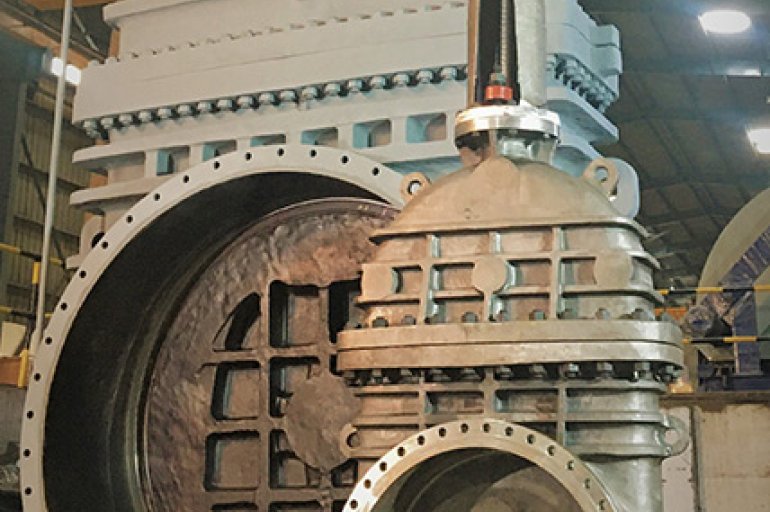Valves in the Oil & Gas Industry: Overcoming Challenges & Enhancing Safety

The oil and gas industry plays a pivotal role in driving the global economy. However, this industry is also fraught with challenges that range from complex operational processes to environmental concerns. One critical component that stands at the heart of oil and gas operations is the valve. Valves are not just mechanical devices; they are the guardians of safety and efficiency in this high-risk industry. In this blog, we'll delve into the challenges faced by valves in the oil and gas sector and explore how advancements are enhancing safety.
The Crucial Role of Valves
Valves hold an irreplaceable position within any oil and gas operation. They
regulate the flow of fluids and gases, facilitating effective production,
seamless transportation, and refining processes. Throughout various
stages—be it extraction, pipeline transport, refining, or
distribution—valves are essential. They come in diverse types, including
gate valves, ball valves, globe valves, and butterfly valves, each tailored
for specific functions.
Challenges in the Oil & Gas Industry
Operating within the oil and gas sector means confronting unforgiving
conditions that challenge equipment integrity and operational efficacy.
Valves, in particular, face unique challenges:
1. Rigorous Environments: Oil and gas facilities are often situated in
remote and severe settings, from offshore platforms to arid deserts and icy
Arctic regions. Valves must withstand extreme temperatures, corrosive
substances, and high pressures while maintaining optimal efficiency.
2. High-Pressure Conditions: High-pressure scenarios are the norm in the oil
and gas sector. Valves must be designed to endure these conditions while
ensuring impeccable seals to avert leakages and prevent hazardous
blowouts.
3. Corrosion and Erosion: The fluids processed in this sector can be
corrosive, leading to gradual material deterioration within valves.
Furthermore, the ceaseless flow of abrasive materials results in erosion,
jeopardizing valve integrity and potentially causing malfunctions and leaks.
4. Safety Imperatives: Safety takes precedence within the oil and gas
industry. Valve malfunctions can trigger gas leaks, fires, explosions, and
environmental catastrophes. Guaranteeing the dependability and fail-safe
operation of valves is paramount to avert such incidents.
Advancing Safety Through Innovation
Despite these challenges, the oil and gas sector remains at the forefront of
embracing innovations that augment valve performance and overall safety:
1. Material Progress: Manufacturers are forging ahead with new materials
that boast excellent resistance to corrosion and erosion. Advanced alloys and
coatings extend the lifespan of valves and reduce maintenance needs,
fostering safer and more efficient operations.
2. Smart Valve Technology: Incorporating sensors and monitoring systems into
valves has revolutionized the industry. These intelligent valves can detect
shifts in pressure, temperature, and flow in real time, empowering operators
to identify potential issues before they escalate into emergencies.
3. Remote Monitoring and Control: With the rise of the Industrial Internet
of Things (IIoT), valves can now be remotely observed and controlled. This
capability diminishes the necessity for personnel to be physically present
in hazardous environments, thereby minimizing exposure to potential hazards.
4. Predictive Maintenance: AI-driven predictive maintenance tools analyze
data from valves and other equipment to forecast maintenance requirements.
This proactive approach precludes unforeseen valve failures, curtails
downtime, and amplifies safety by pinpointing potential issues before they
trigger accidents.
5. Emergency Shutdown Systems: Valves are integrated into emergency shutdown
systems that automatically close valves in response to critical conditions.
This swift response can forestall or mitigate disasters, shielding
personnel, equipment, and the environment.
The Future Landscape of Valves in Oil & Gas
As the oil and gas industry marches forward, valves will remain linchpins
of safety and operational excellence. Anticipated advancements may include:
1. Nanotechnology: Researchers are probing the application of nanomaterials
to fabricate valves with heightened resistance to corrosion, erosion, and
wear. Nanotechnology could potentially reshape valve design, rendering them
even more robust and dependable.
2. Hybrid Valves: By amalgamating the strengths of various valve types, the
industry could unveil hybrid valves that proffer enhanced performance and
versatility across diverse conditions.
3. Automation and AI: Infusing artificial intelligence into valve control
systems could facilitate autonomous responses to changing conditions,
further mitigating accident risks and enhancing operational efficiency.
Conclusion
Valves play an essential role in the oil and gas sector, acting as guardians
of safety and efficiency in a challenging industry. Overcoming the hurdles
posed by harsh environments, high pressures, and safety concerns requires
constant innovation and dedication. The oil and gas industry has made
significant strides in enhancing valve performance and safety, driven by
advancements like smart valve technology, remote monitoring, and predictive
maintenance.
In this journey of progress, companies like Oswal Industries Limited,
prominent valve manufacturers and suppliers in India, have been at the
forefront of pushing the boundaries of valve technology. Their commitment to
excellence has contributed to the development of materials, designs, and
technologies that are better equipped to withstand the demanding conditions
of the oil and gas industry. Such proactive engagement by companies like
Oswal Industries Limited ensures that valves continue to evolve as
resilient, reliable, and crucial components in ensuring the safety and
efficiency of oil and gas operations.
Looking ahead, the future of valves in the oil and gas industry holds the
promise of even greater advancements. As technology evolves and new
materials are explored, valves are likely to become even more durable,
efficient, and adaptable to changing conditions. With the integration of
artificial intelligence, hybrid valve designs, and ongoing collaboration
between industry leaders and researchers, the oil and gas sector will
continue to enhance its safety measures while optimizing operational
processes.
In conclusion, valves are the unsung heroes of the oil and gas industry,
ensuring the secure and efficient flow of energy resources. Through
innovation, collaboration, and the unwavering dedication of manufacturers
and suppliers like Oswal Industries Limited, prominent valves manufacturers
and supplier in India, the industry is poised to meet challenges head-on
and maintain its commitment to safety and sustainability in the years to
come.
